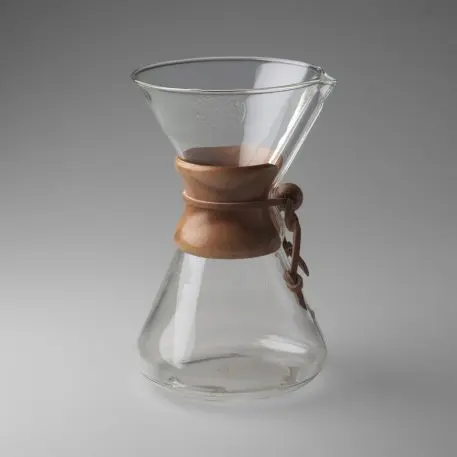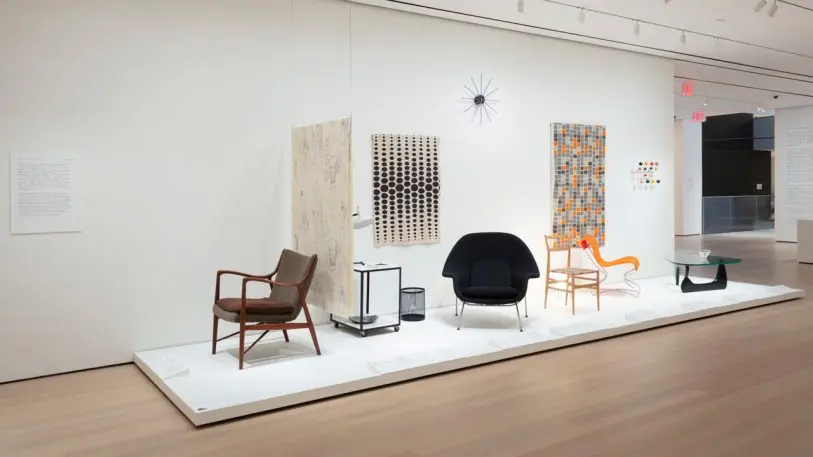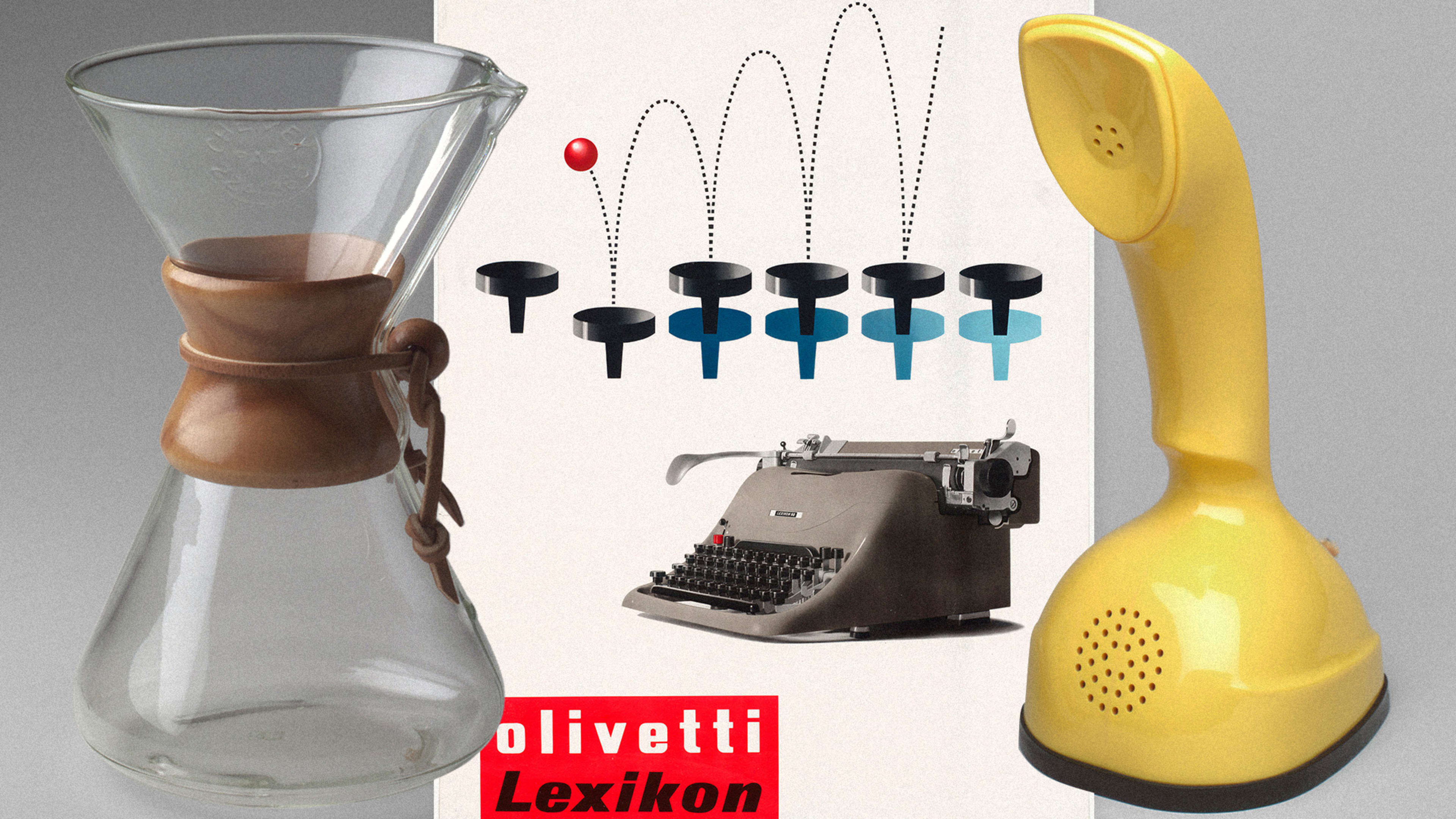Starting in the 1930s and lasting through the 1950s, the Museum of Modern Art embarked on a series of influential exhibitions that would create an entirely new way of thinking about design. By elevating everyday, inexpensive objects that fit the museum’s criteria of “good design,” MoMA paved the way for modernism to hit the mainstream, launching the careers of seminal designers like Eero Saarinen and Charles Eames and displaying designs that visitors could actually buy.
But there was a hidden agenda–one explored in the museum’s latest exhibition, The Value of Good Design, which opened over the weekend: to extol the virtues of American consumerist capitalism in comparison to Soviet communism, and to boost the American economy in the post-World War II era.

During this era, MoMA hosted competitions that challenged designers to come up with design that was accessible to everyone, and curated “Good Design” exhibitions that showcased notable, inexpensive, household design, including the classic Chemex coffee maker, the Slinky, and Tupperware–designs that have become such a core part of American culture that they’re still sold today.
These were also the types of objects that were featured in a MoMA exhibition that toured Europe from 1950 to 1952 promoting American design. But this was no innocuous design fair. It was funded by the State Department and curated by MoMA to broadcast beautifully designed American products as evidence of the country’s dominance–and as proof that capitalism was superior to Communism.
“The story of exporting Abstract Expressionism in Cold War politics is more familiar, but actually far more visible were these exhibitions of Good Design,” says Juliet Kinchin, the curator of the exhibit. “And they literally did go all over the world.”

There was a secondary motivation for the Good Design institution as well: economic expansion, both at home and abroad. According to Kinchin, the Good Design exhibitions, which were established in conjunction with the Chicago Merchandise Mart, played a key role in educating the American consumer about why they should be buying these kinds of American household products.
“[MoMA’s curators] recognized that it was no good designing an incredibly good chair in the studio if you didn’t have a culturally prepared manufacturer or retailer or consumer to really provide momentum for changing, for making a paradigm shift into the modern,” Kinchin says.
In other words, the Good Design exhibitions were marketing. Stores that wanted to sell objects that had been featured could emblazon them with the program’s logo, a red dot with the words “Good Design” written inside. Catalogues for the exhibitions also included exactly where people could buy each product, like a glorified showroom with an institutional stamp of approval from the MoMA curators.
The competitions, which were accessible to all, also opened the door for European designers to find a foothold in the U.S. market. For instance, MoMA’s 1950 International Competition for Low-Cost Furniture Design was meant to generate new furniture that could be mass-produced. Though few were manufactured, Danish designer Hans Wegner said of the competition: “We felt as if a window had been opened and we were given a chance to show what we could do.”
The Value of Good Design also tries to recognize the international influence of the original Good Design program, which exported American ideals of modern design globally. Many of the designs featured in the new exhibit are from around Europe, including Germany and Italy, including items that had no explicit ties to MoMA or its competitions. These were simply items that MoMA’s curators, at the time, deemed Good Design (and have since been added to the museum’s permanent collection), like the tiny Fiat 500, usually called the Cinquecento, that squats near the entrance of the exhibition.

There were similar economic motives abroad. As the exhibitions traveled across Europe, they became a vehicle for the Marshall Plan, an economic agenda adopted after the war to rebuild Europe’s economy.
“Responding to requests from officials at home and abroad, MoMA curators embraced the ideological value of well-designed objects as emissaries of the openness and freedom of Western democracy,” reads one wall text. “In this respect the Museum played an important role in promoting American industrial design internationally, initially under the auspices of the Marshall Plan, which distributed US aid to European and Asian economies devastated by the war.”
But it was not a one-sided deal. As America opened its doors to European products, so too did Europe provide a new market for American goods. In establishing MoMA as a global design arbiter, the U.S. set itself up as a power player in the new consumer-friendly market of the 1950s.
“The cumulative effect of the program at MoMA, and in some other museums like the Detroit Institute of Arts and Minneapolis’s Walker Art Center, was to position American industrial design internationally, appearing on par in triennials, in these design shows that were happening all over the world from Brazil to Belgrade to New Delhi,” Kinchin says.
In a time when nostalgia for midcentury design lacks grounding in history, it’s worth remembering that this aesthetic didn’t become popular on its merits alone. While Kinchin’s exhibit still glamorizes MoMA’s own role in the rise of midcentury modern, it also acknowledges the crucial sociopolitical and economic reasons that drove it to global popularity.
Recognize your brand’s excellence by applying to this year’s Brands That Matter Awards before the early-rate deadline, May 3.






















